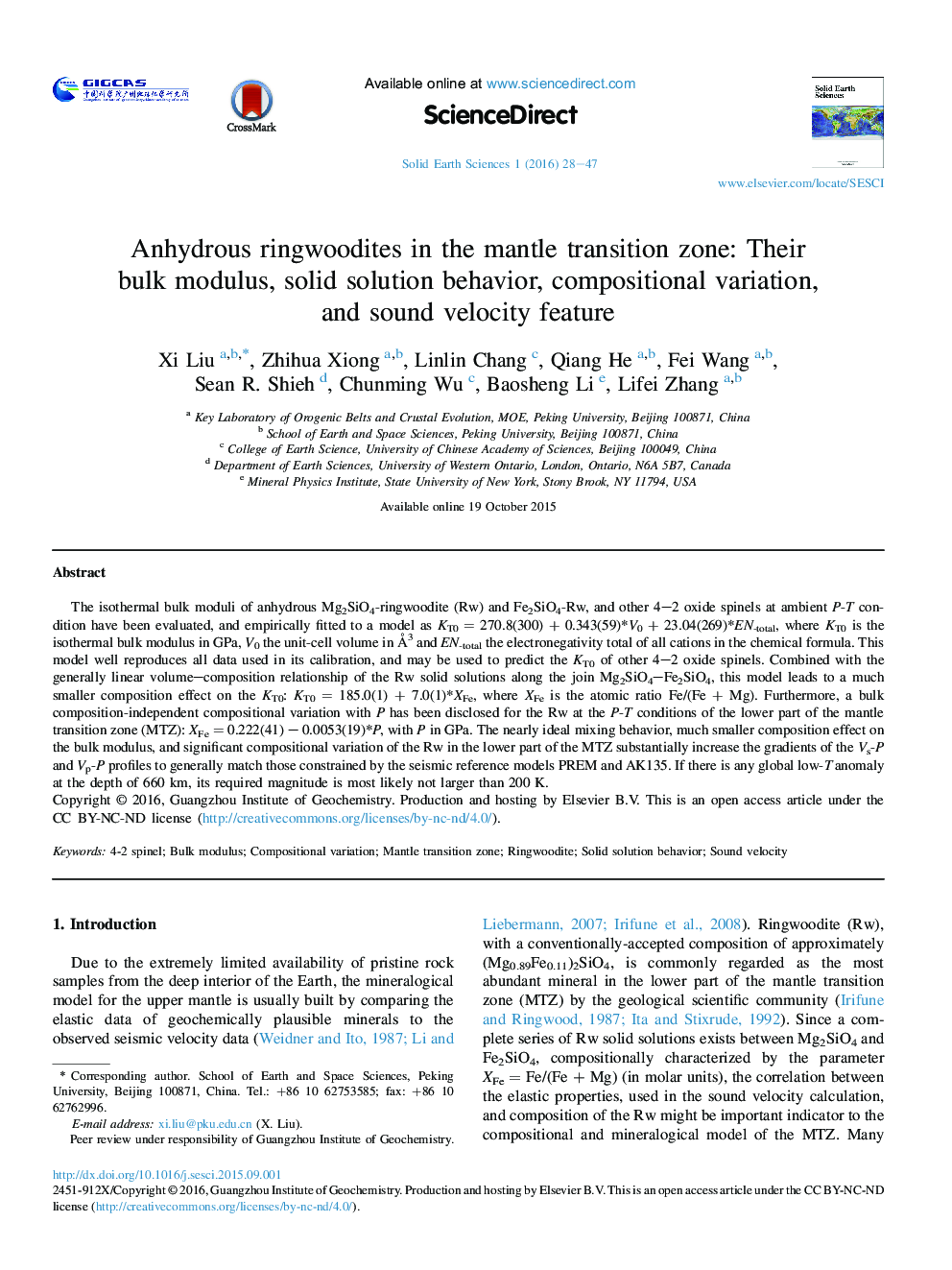| کد مقاله | کد نشریه | سال انتشار | مقاله انگلیسی | نسخه تمام متن |
|---|---|---|---|---|
| 4725598 | 1355993 | 2016 | 20 صفحه PDF | دانلود رایگان |
The isothermal bulk moduli of anhydrous Mg2SiO4-ringwoodite (Rw) and Fe2SiO4-Rw, and other 4–2 oxide spinels at ambient P-T condition have been evaluated, and empirically fitted to a model as KT0 = 270.8(300) + 0.343(59)*V0 + 23.04(269)*EN-total, where KT0 is the isothermal bulk modulus in GPa, V0 the unit-cell volume in Å3 and EN-total the electronegativity total of all cations in the chemical formula. This model well reproduces all data used in its calibration, and may be used to predict the KT0 of other 4–2 oxide spinels. Combined with the generally linear volume–composition relationship of the Rw solid solutions along the join Mg2SiO4–Fe2SiO4, this model leads to a much smaller composition effect on the KT0: KT0 = 185.0(1) + 7.0(1)*XFe, where XFe is the atomic ratio Fe/(Fe + Mg). Furthermore, a bulk composition-independent compositional variation with P has been disclosed for the Rw at the P-T conditions of the lower part of the mantle transition zone (MTZ): XFe = 0.222(41) – 0.0053(19)*P, with P in GPa. The nearly ideal mixing behavior, much smaller composition effect on the bulk modulus, and significant compositional variation of the Rw in the lower part of the MTZ substantially increase the gradients of the Vs-P and Vp-P profiles to generally match those constrained by the seismic reference models PREM and AK135. If there is any global low-T anomaly at the depth of 660 km, its required magnitude is most likely not larger than 200 K.
Journal: Solid Earth Sciences - Volume 1, Issue 1, June 2016, Pages 28–47
